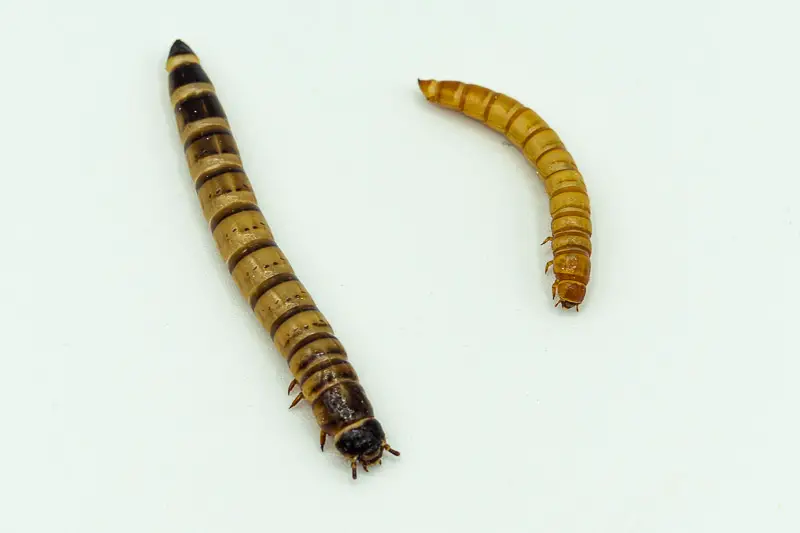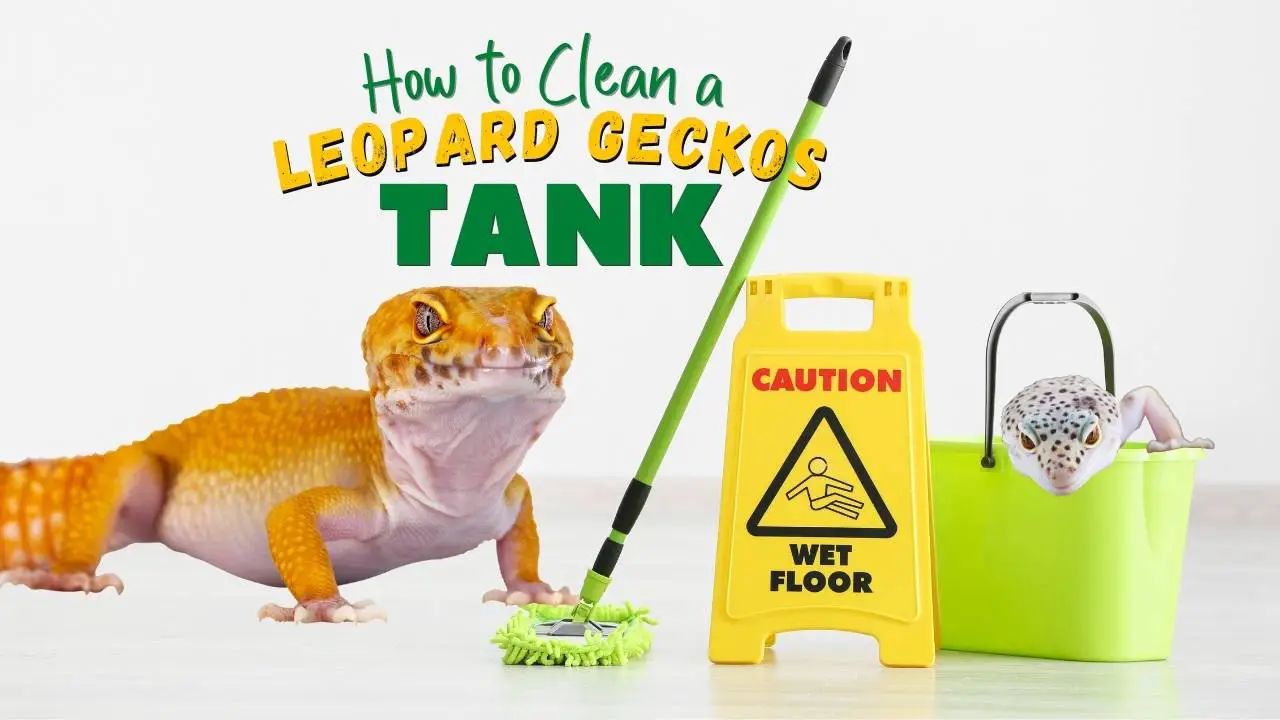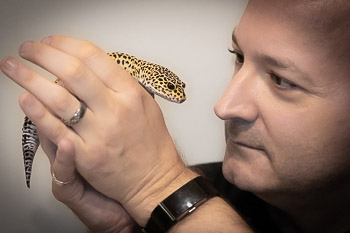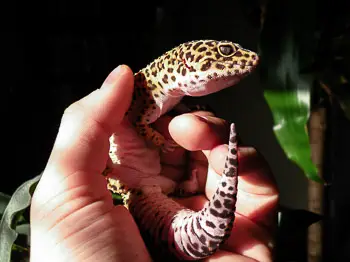As animal lovers, we understand the importance of keeping our pets’ habitats clean and healthy. A clean tank not only ensures your leopard gecko’s well-being, but also helps prevent diseases and infections.
Cleaning a leopard gecko tank may seem overwhelming at first, but with the right tools and techniques, it can be a simple and rewarding task. In this article, we will provide you with step-by-step guidance on how to clean your leopard gecko’s tank, including how often to clean it and the different methods for spot cleaning and deep cleaning.
So, let’s start creating a healthy and happy home for your leopard gecko!
Key Takeaways:
- Regular cleaning, sterilization, and disinfection are important for maintaining a healthy and safe environment for leopard geckos.
- Proper feeding techniques, food choices, and substrate selection can help maintain a clean tank.
- Creating a cleaning schedule and using recommended cleaning supplies and techniques can ensure effective cleaning and maintenance of the tank and accessories.
What You’ll Need for Cleaning
You’ll need a few essential items to get started on cleaning your leopard gecko tank. First and foremost, you’ll need cleaning supplies such as paper towels, a sponge or scrub brush, and a reptile-safe cleaning solution.
It’s best to choose a cleaning solution that is specifically designed for reptile habitats, as other household cleaners can be harmful to your gecko. For cost-effective options or an alternative to chemicals, some gecko owners prefer more natural cleaning methods such as vinegar and water, or a baking soda paste. We recommend using a reptile disinfectant product like Zoo Med Wipe Out 1, which is safe and effective.

How often to clean your leopard gecko tank
Typically, it’s best to give your pet’s home a good scrub down on a regular basis. But how often should you clean your leopard gecko’s tank? There are different frequency options to choose from, depending on your time management, health benefits for your pet, environmental impact, and cost effectiveness.
The basic steps come down to this. We’ll go into more detail below.
- Remove your gecko and place it in a temporary holding tank
- Remove accessories and bowls
- Remove and clean the substrate
- Clean and disinfect the tank surfaces
- Clean and disinfect the accessories and bowls
- Put your tank back together
Ultimately, the decision of how often to clean your leopard gecko’s tank depends on your personal circumstances. A dirty enclosure can breed bacteria and invite ailments like mouth rot or tail rot. A clean tank is also less likely to smell. Leopard geckos themselves usually don’t smell bad, though a dirty tank can get pretty ripe.
Consider your schedule, budget, and your pet’s health. A clean and healthy environment will help your gecko thrive and live a long, happy life. (And leopard geckos do live a long time.)
Spot Cleaning
When it comes to spot cleaning your leopard gecko’s tank, make sure to pay extra attention to two key areas. Always try to remove any uneaten insects and scoop up any poop to maintain a clean and healthy environment for your gecko.
Also, if your gecko has recently shed, remove any loose skin or debris that may be lying around the tank.
Remove uneaten food
Leftover food in your leopard gecko’s tank can create a mess. We remove uneaten insects (especially crickets) so they don’t eat anything in the enclosure or add to the poop. (Crickets are notoriously messy and superworms will eat or burrow into just about anything.)

It’s also important to consider the types of food you are feeding your gecko. In the wild, leopard geckos primarily eat insects, so it’s best to stick to a diet of crickets, mealworms, and other small insects.
Avoid feeding your gecko fruits, vegetables, or other human food, as they can cause digestive problems. By following proper feeding techniques and food choices, you can prevent uneaten food from building up in your gecko’s tank and ensure they stay healthy and happy.
Make sure the water is fresh
Make sure there is clean water; empty the water bowl and change out the water as needed to make sure it’s fresh. Sometimes standing water can be a source of mold or a place for bacteria to grow, especially in a warm enclosure.
Scoop the Poop
Proper waste management is necessary to prevent health issues and maintain a clean and odor-free environment for your pet. But fret not, scooping the poop is not as daunting as it sounds.
You can invest in a poop scoop, though we usually just use a plastic spoon. You can also use a paper towel to pick up the waste. Scoop up the poop and dispose of it in your trash or flush it down the toilet. (However, ensure that you do not flush the substrate along with it. – We’ll talk more about substrate later.)
When spot cleaning, remove the poop when you see it to prevent the buildup of bacteria and foul odor.
Related Post: How Often do Leopard Geckos Poop?
Weekly Cleaning
One way to maintain a clean leopard gecko tank is by cleaning it on a weekly basis. Not only does it benefit their health, but it also makes for easier maintenance in the long run.
Just like your home, picking up along the way a bit each day or having a weekly schedule helps keep things clean (or at least cleaner) and organized.
To make the process easier, you could create a simple schedule to keep track of when the tank was last cleaned and when it needs to be cleaned again. Here’s an example of what that could look like:
| Day | Task |
|---|---|
| Daily | Spot clean the tank |
| Monday | Change water dish |
| Friday | Wipe down and sanitize tank surfaces |
Simply making sure there is fresh water and giving a quick wipe down can bridge the gap between deep cleanings.
Deep Cleaning
So, we’ve learned about spot cleaning to keep our leopard gecko’s tank tidy and healthy, but sometimes a deep clean is necessary. When it comes to deep cleaning, it’s important to consider the type of substrate you’re using.
Empty the Tank
Before deep cleaning, we’ll need to first empty out all of the contents from your gecko’s enclosure. This includes removing any decorations, hides, water dishes, and of course, your gecko. Make sure to place your gecko in a safe temporary container while you’re cleaning.
The aim is to remove everything so the enclosure itself can be thoroughly cleaned.
Substrate Types and Cleaning
Instead of using sand or loose substrate, you should opt for a solid and easy-to-clean substrate for your leopard gecko’s tank. Trust us, it will save you a lot of hassle in the long run! Sand alternatives such as reptile carpet, paper towels (especially for juvenile geckos), or tile are great options. These substrates are safe for your leopard gecko and easy to maintain.
When choosing a substrate, substrate safety should be a top priority. Sand and loose substrate can be hazardous to your leopard gecko’s health. If ingested, sand has a risk of impaction, which is when the sand accumulates in the digestive tract, leading to blockage and possible death.
Besides, sand and loose substrate can be difficult to clean, which can lead to bacterial growth and infections. Choosing the right substrate is important for your leopard gecko’s health and happiness!
Related Post: Best Substrate for Leopard Geckos
Remember, a clean and safe substrate is essential for the well-being of your leopard gecko. Opt for a substrate that is easy to clean and maintain, and avoid sand or loose substrate.
Cleaning and Sterilizing of the enclosure and accessories
Once everything has been removed from the tank, it’s time to prepare the tank for cleaning. Avoid using harsh chemicals that can harm your pet.
We recommend disposing of any old sand or loose substrate. If you’re using reptile carpet, clean it with gentle soap and hot water, and let it dry before putting it back in the tank. It’s best to have 2 reptile carpets and rotate them between cleanings.
Use reptile-safe disinfectant or hot soapy water to clean the tank thoroughly. After cleaning, be sure to rinse the tank well with fresh water to remove any soap residue.
Clean and sterilize any accessories. Scrub down hide boxes, food bowls, water bowl, rocks, tank decor, etc. Rinse everything thoroughly with hot water to remove any remaining residue from the cleaning solution. Proper ventilation helps drying the enclosure and accessories. Make sure to let them air dry completely before returning them to the enclosure.
Bacteria and pathogens can cause serious health risks to our pets, so proper disinfecting methods should always be observed to prevent the growth of bacteria.
Sterilization
Maintaining proper hygiene through sterilization techniques is essential for the health and well-being of our beloved pet reptiles. Disinfection methods and sanitization techniques are crucial in keeping a leopard gecko tank free from harmful pathogens and bacteria. These specialized disinfectants are designed to kill bacteria, viruses, and fungi that can cause infections.
A mild bleach solution and disposable gloves can go a long way to cleaning the glass surfaces, just make sure to thoroughly rinse everything before putting the tank back together. Harsh chemicals aren’t great for getting rid of bacteria and germs, but not so great for pets. A better way to go is to use reptile safe cleaner like the Zoo Med Wipe Out 1 we mentioned is designed specifically for this purpose. A steam cleaner can help sanitize without the need for chemicals.
Reassemble your Tank
Make sure the tank interior and all accessories are dry before putting your enclosure back together. Reassemble the tank by adding clean substrate, decorations, hides, as well as the food and water bowls. Once everything is ready, it’s time to return your gecko to its clean home.
Wrap Up – Cleaning Your Leopard Gecko’s Tank
Cleaning a leopard gecko tank doesn’t have to be a chore. With a schedule and a bit of effort, you can keep your gecko’s habitat clean and healthy.
Remember to spot clean daily, deep clean monthly, and perform a weekly cleaning to ensure your gecko is living in a safe environment.
It’s important to remember that keeping the tank clean not only benefits your gecko’s health, but also helps create a visually appealing and enjoyable living space for both you and your pet. Think of it like cleaning your own home – a clean space makes for a happy and comfortable living experience.
So, roll up your sleeves, grab your cleaning supplies, and give your leopard gecko the home they deserve! And now that the tank is clean, have you ever wondered if your leopard gecko needs a bath?





